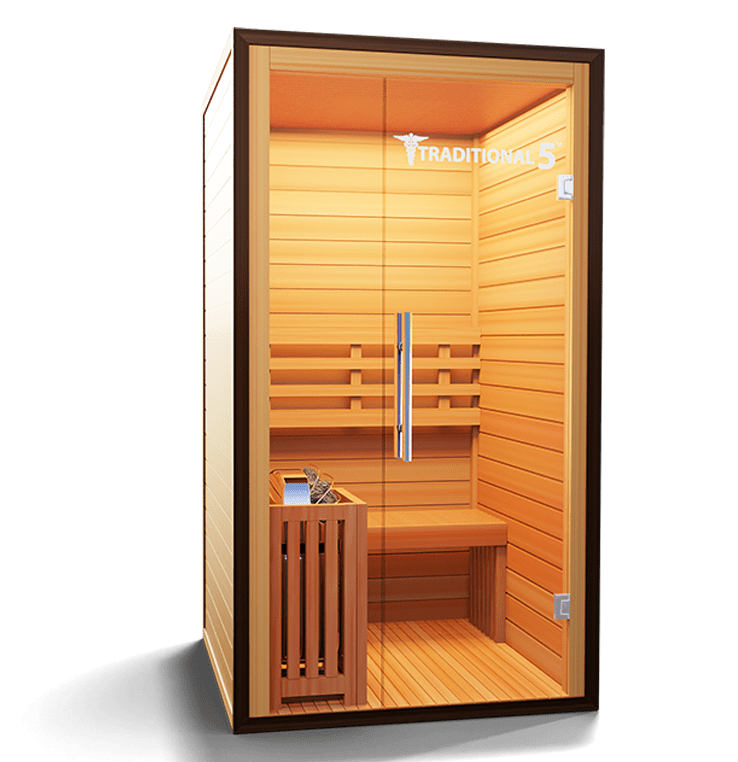4 Simple Techniques For Traditional Sauna
Table of ContentsSome Known Details About Traditional Sauna Traditional Sauna Can Be Fun For EveryoneThe Buzz on Traditional SaunaIndicators on Traditional Sauna You Should Know
A lot of the weight lost in a sauna is water loss and is re-gained upon rehydrating. Nonetheless, certainly sauna can be an important component of a healthy and balanced weight-loss program. To check out the differences in between conventional and IR saunas, I will certainly separate these into proven, academic, and produced differences.Thus, the most popular factor in the saunawhich is at the ceiling directly above the sauna heateris normally between 185 and 190 F. Traditional Sauna. Claims that a traditional sauna goes beyond 200 F is merely not real and not suitable for electrical saunas sold in the United States. The temperature for a far-infrared sauna is normally set in between 120 and 140 F; however, unlike the traditional sauna, the goal in and IR room is not to accomplish a high temperature
Due to this, the temperature level difference is practically unnecessary, given that excessive sweating leads to both sauna kinds, but the approach of warming the body is different. In an IR sauna the bather will certainly really feel hot and will sweat a lot, yet at a lot lower temperature levels. Therefore, if the goal is to invest longer durations of time in the sauna, the IR sauna is an excellent choice.

Traditional Sauna Can Be Fun For Everyone
When the high temperature level is attained, the components cycle on and off to preserve the heat. Most standard sauna users take pleasure in pouring water over the rocks to create heavy steam to elevate sauna humidity levels. The benefits of putting water over the rocks consist of: making the area a lot more comfy, moistening the nasal flows, and enabling the usage of aromatherapy by blending essential oils with the water.
In a far-infrared sauna, the warmth waves penetrate the body to properly heat the body and increase the body core temperature level. To attain this increased temperature level, Far-infrared emitters produce infrared power which is close to the same wavelength as that which the body normally emitsoften referred to as the "Essential Array" of 7 to 14 microns), so the energy is well received by the body.
When the power goes into the body, it causes the body temperature level to boost and inevitably results in sweating. In an infrared sauna it is essential for the emitters/heaters to continue to be on almost regularly. Given that there is no mass of rocks to preserve warmth, the sauna will certainly cool down if the emitters shut down.
As pointed out above, the sauna bather in an infrared area wants to position himself in front of running emitters to obtain optimal benefit from the heat. The home heating time for the 2 spaces can be really various, depending on just how the areas read this article are made use of. For a traditional sauna, a bather should enable 30-40 minutes for the space to achieve a wanted temperature and to correctly pre-heat the rocks.
How Traditional Sauna can Save You Time, Stress, and Money.
A well constructed sauna will typically achieve a temperature of 150-160 F in concerning 30-40 mins. For hotter temperature levels, the room may need to warm for a longer duration.
To some, 15 mins was "squandered" while the infrared energy warmed the timber panels rather than heating a body, while others find a pre-heated space to be more comfortable and think a raised beginning temperature is required to begin perspiring. The size of advised use for every room is about the very same (10-15 mins per session); nonetheless, because of the reduced air temperatures and the capability to feel the effects of infrared heat quicker than a conventional sauna, it is not uncommon for an individual to invest a total of 20-30 mins in an infrared sauna.
Conventional saunas have a tendency to be larger (hence use even more electrical energy) than infrared saunas, although conventional saunas are absolutely available in one and 2 individual dimensions. For a two-person traditional sauna, 5x6 or 5x7 dimension is most preferred. The top bench can easily seat 2 or three people anchor and is also enough time to lie down during the sauna session.


The ordinary cost per kWH of electrical energy in the united state is about $0.11, so a 4.5 kW heater will set you back approximately $.50 to run for one hour, if the heating system runs continuously for one hour. Normally a sauna heating unit will certainly compete 75% of the very first hour and 50% of succeeding hours on because the elements cycle once the established temperature is accomplished.
The Best Strategy To Use For Traditional Sauna
A 2 person far-infrared room is generally physically smaller sized than a traditional sauna, often regarding 4' x 4' or smaller sized. The IR heater is commonly 1.5-1.7 kW using a 120 volt 15 amp plug-in solution. Since the room can be made use of earlier than a sauna space, we will certainly assume the space is utilized for to of an hour including warm have a peek at these guys up time.
There is a hardly ever discussed distinction in the social experience in between the 2 rooms. While our society has shed several of the social benefit of the traditional sauna experience, it can be extremely socially rewarding. From family time in the sauna, to heart-felt conversations with loved ones, to sauna partiesthe conventional sauna experience can lead to intimate mingling.
Most higher end infrared areas consist of tinted light treatment, sound systems and full-glass fronts.
Comments on “The Basic Principles Of Traditional Sauna”